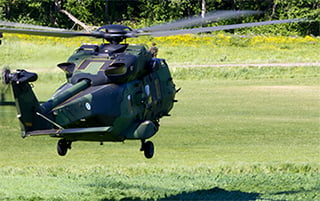- Segments
- Products and solutions
- Products and solutions
- Broadband
- Devices and accessories
- Applications
- Control Rooms
- TETRA and Tetrapol
- Customers
- Ecosystem
- How to buy
- Blog
- EN
When a natural or human-made disaster hits, it is vital to get aid in place immediately. Evacuating the injured and providing first aid are critical first steps in relief operations. Rescue work is often performed when terrestrial cellular services are unavailable. So, it’s vital to build dedicated and new information and communication emergency systems immediately when no other networks are available.
At a field hospital, treatment in the first hour – the golden hour - is crucial to patient survival. That’s why hospital workers must be informed early about the nature of injuries, allowing them to prepare. This can save up to half an hour of that crucial first life-saving 60 minutes.
Protect your workers and communicate internationally
Relief operations are typically long-term, extensive and include many phases and numerous parties from different countries. With a TETRA network from Airbus, you can safely connect and manage all involved national and international authorities, humanitarian aid organisations or civil defence organisations and volunteers. Reliable communications help to protect those in need, as well as their rescuers.
Floods, hurricanes, earthquakes, drought, tornadoes and riots or human-caused disasters happen suddenly. You need to be prepared well in advance. The best option is a ready-configured and packed container with all rescue necessities, including a working and secured TETRA radio communications system - for example, the Deployable TETRA solution. When the worst happens, you and your communications network will be ready.

The digital, Deployable TETRA radio network is easy to deliver and install, right where it can make a difference. It can be set up in less than ten minutes, while its intuitive interface makes it easy to use.
A wide range of electricity supply sources can power the system’s devices, which can withstand wildly varying voltages. Battery backups keep them working even if the power supply is disconnected. Tough and dependable, deployable TETRA network equipment works reliably in the open air without the need for environmental shelters.
Watch a video ---